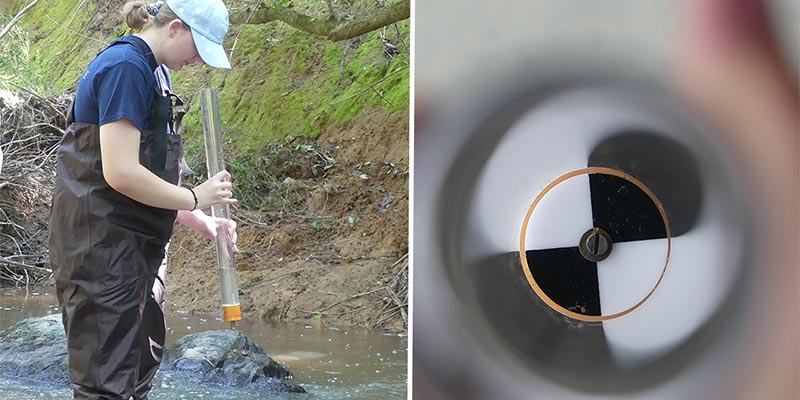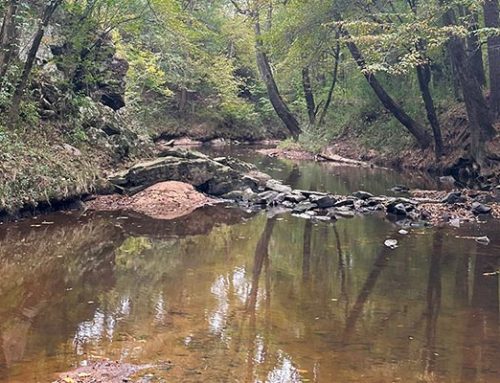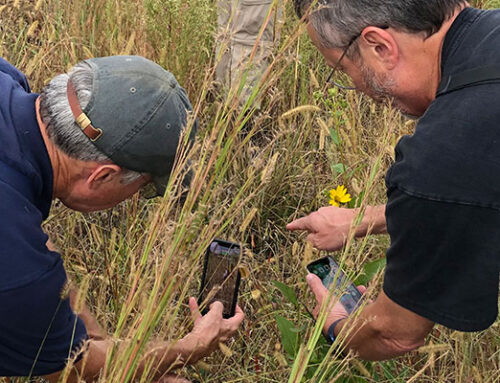Who Knew? Cloudy with a Chance of Clues

The Dirt on Turbidity
When we think about water quality, most of us picture color, smell, or whether we want to swim in it. But there is one surprisingly important test that tells us a while lot about the health of a stream or creek—just by looking at how cloudy the water is. It is called Turbidity, and trust me, it is cooler than it sounds.
Turbidity is a fancy word for how clear (or not clear) water is. Think of it this way: if you poured water into a glass and held it up to the sunlight, could you see right through it? Or does it look a little murky, maybe like tea or chocolate milk after a good rain? That murkiness comes from tiny particles – like dirt, algae, silt, or even bits of decaying leaves – floating in the water. And those floating bits can tell us a lot about what is going on in a watershed. Here in Chesterfield County, we at CWF tests for turbidity regularly as part of our water quality monitoring program for the Thompson Creek Watershed. It is one of the simplest tests we do, but it packs a punch when it comes to telling the story of the creek’s health.
What Can Murky Water Tell Us?
You might be surprised just how much! For one, high turbidity usually means something upstream is changing. Maybe heavy rains caused soil to wash into the creek. Or maybe construction or logging nearby is disturbing the ground. Even cows wading into the water can stir up the sediment. Turbidity gives us early clues that erosion or pollution might be happening –even before we see other warning signs. Turbidity can also hurt the animals and plants that live in the water. If the water is too cloudy, sunlight cannot reach the plants that grow underwater, which means less food and oxygen for fish. Some of the tiny particles can even clog fish gills or smother fish eggs that have settled in gravel. Over time, high turbidity can change the entire ecosystem. And here is something else: warmer water holds less oxygen, and cloudy water eats up faster than clear water because it absorbs more sunlight. That means turbidity can affect temperature and oxygen levels too – two other things that we measure as part of our monitoring program.
How Do We Measure It?
This is where the fun science tool comes in! we use something called a Turbidity Meter – a little handheld device that shines a light through a sample of creek water. The meter measures how much the light bounces around due to the particles in the water. The cloudier the water, the more scattered there is, and the higher the turbidity reading. If you are a fan of analog tools, you might also enjoy the old-school Secchi Disk, which looks like a black-and-white cookie on a string. You lower it into the water until you cannot see it anymore, and how deep it goes gives a rough estimate of clarity. It is simple but still used in lakes and coastal waters today.

Turbidity Testing - the old-school Secchi Disk.
Why Does It Matter?
At first glance, turbidity might just seem like an aesthetic issue—nobody wants to swim in brown water. But to scientists and environmental stewards like us, it is a red flag. High turbidity does not always mean there is something dangerous in the water, but it often points to us the need for more testing, more attention, and sometimes action.
The Bottom Line
So, who knew this little test could tell us so much? Turbidity might not be the flashiest part of our monitoring program, but it is one of the most insightful. It reminds us that sometimes, the clearest picture of water health is not something we see with our eyes, it is something we discover by looking through the water a little more closely. Next time you pass by a creek after it rains or scoop up a handful of pond water, take a moment to notice what it looks like. You will be seeing it through the eyes of a water quality scientist—and now you will know what cloudiness means!







